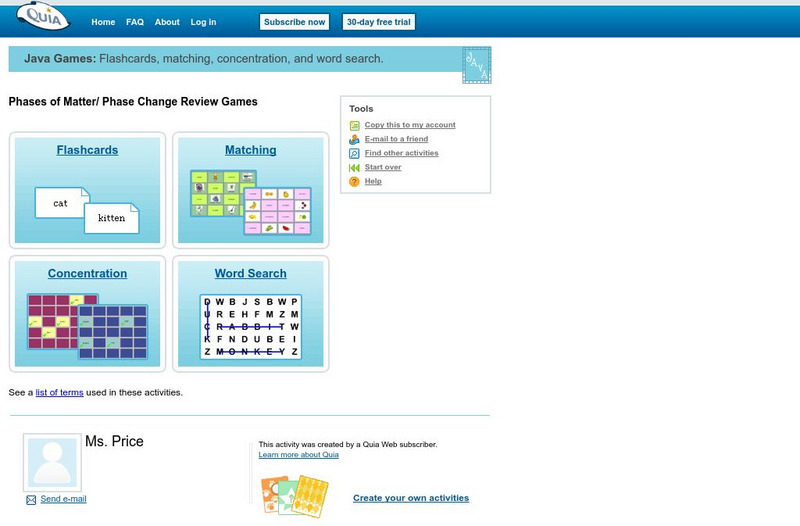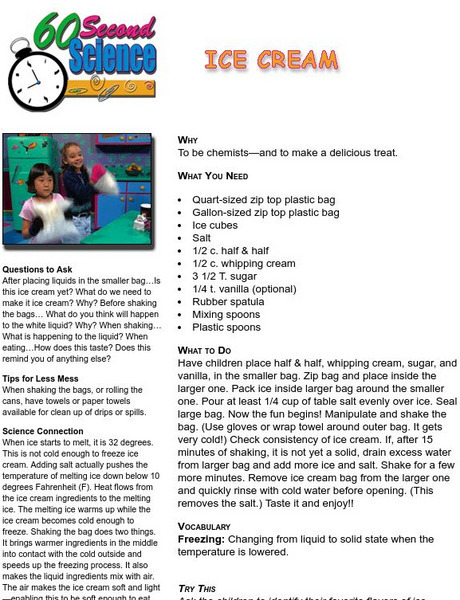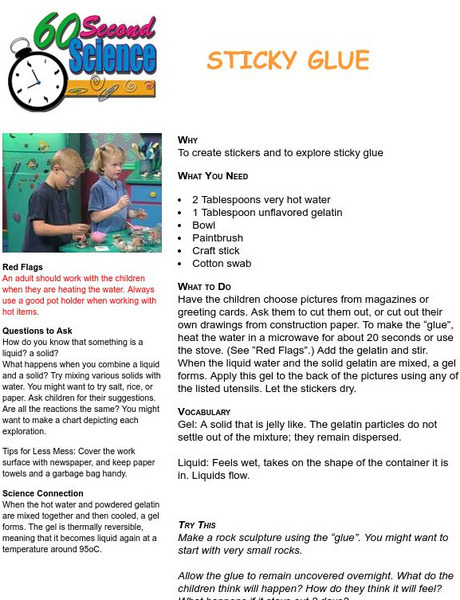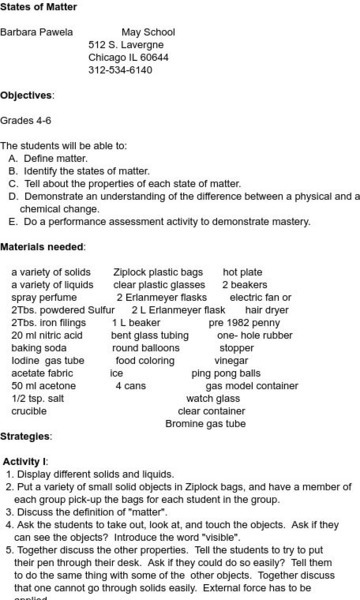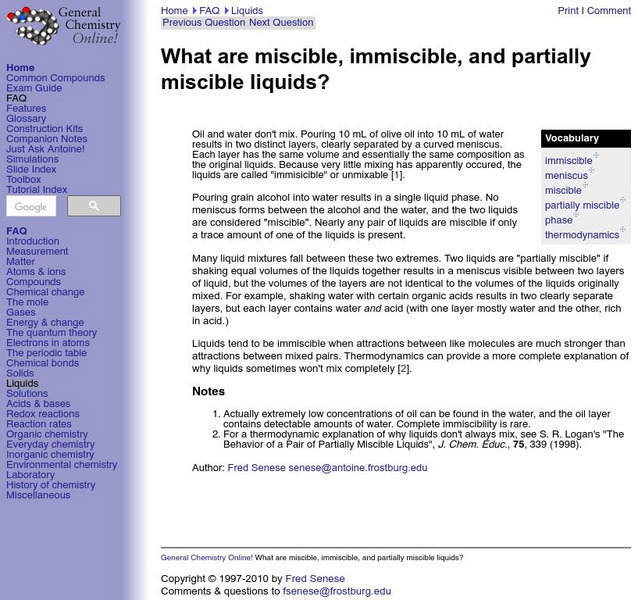Hi, what do you want to do?
PBS
Pbs Teachers: Bottle Fountain Experiment
Demonstrate how heating expands air molecules by constructing a bottle fountain powered by air pressure.
PBS
Pbs Teachers: Floating Paper Clips Experiment
Explore surface tension in water by making a paper clip float.
Other
Ready: Disaster Supply Kit
Suggestions for basic items a family should have on hand in case of disaster is reviewed.
Treehut
Suzy's World: How Come Some Liquids Don?t Mix?
This site from Suzy's World explores how and why certain liquids mix better than others. Content includes fun facts and a classroom experiment. This site also includes links to additional information on related subjects.
Quia
Quia: Phases of Matter
Four activities for reviewing vocabulary and definitions related to changes in states of matter.
Other
Colts Neck Township Schools: Hands on Technology: Solids, Liquids, and Gases
Printable classroom-ready worksheets for a series of simple-to-implement experiments about the states of matter.
Other
Homewood City Schools: Classification of Matter
This Homewood City Schools site has an outline form and contains lots of information about the classification and composition of matter. Some of the topics covered are matter and temperature, changes in state, composition of matter, and...
Ducksters
Ducksters: Kids Science: Melting and Boiling
Kid's learn about the science of melting and boiling. How matter changes state from solids to liquids to gases.
Science Bob Pflugfelder
Science Bob: Make a Paperclip Float!
Presents a procedure for getting a paper clip to float in water. Following the procedure, the site gives a brief explanation and discussion of surface tension.
ClassFlow
Class Flow: States of Matter Venn Diagram
[Free Registration/Login Required] States of Matter: Venn Diagram for Solids, Liquids, and Gases.
Other
60 Second Science: Easy Putty
Explore the properties of colloids while making putty. Discover how some mixtures can display properties of both solids and liquids.
Other
60 Second Science: Making Ice Cream
Discover how liquids can change to solids while making ice cream.
ClassFlow
Class Flow: Matter
[Free Registration/Login Required] This flipcharts explains the basics of matter. Opportunities for student involvement include measuring solids, identifying matter, and a sorting activity.
ClassFlow
Class Flow: Matter
[Free Registration/Login Required] This flipchart is a lesson covering four of the five states of matter. It includes several assessment questions.
Science and Mathematics Initiative for Learning Enhancement (SMILE)
Smile: States of Matter
A comprehensive lesson plan site that contains a number of activities to aid in teaching about the states and properties of matter and the difference between a physical and chemical change.
Frostburg State University
Frostburg State University: Miscible & Immiscible Liquids
Discussion of miscible (mixable) and immicible (unmixable) liquids.
Frostburg State University
Frostberg University: Surface Tension in Liquids
Explains the role of surface tension in a liquid and how oil can be used to keep water from boiling over.
PBS
Pbs Teachers: Ice Cream Shake
Investigate states of matter while making ice cream. Explore how to turn a liquid into a solid by removing heat energy.
Chem Tutor
Chem Tutor: States of Matter
A very descriptive site that allows students to understand the different states of matter at the atomic level. Also discusses the process of phase changes and displays phase change graphs. Thermochemistry is also touched upon for high...
Science and Mathematics Initiative for Learning Enhancement (SMILE)
Smile: Physical and Chemical Changes
This lesson plan focuses on the difference between physical and chemical changes of matter.
HotChalk
Hot Chalk: Lesson Plans Page: Science Lesson on Water
This activity will teach students about the three states of water found on our planet: solid, liquid gas. They will learn to distinguish the differences between these states and will be able to give examples of each.









